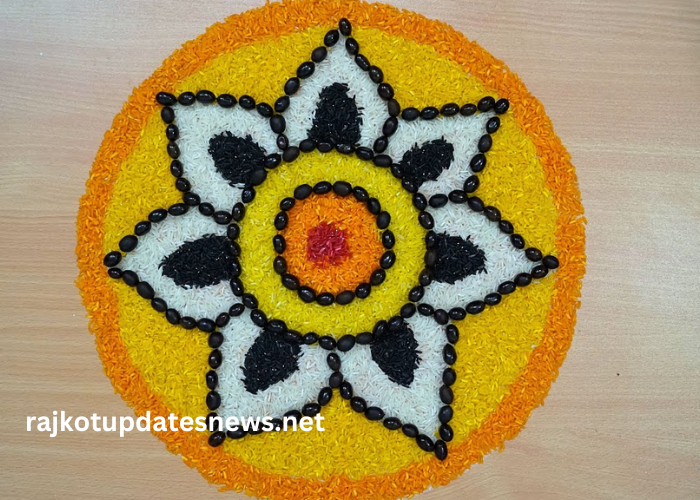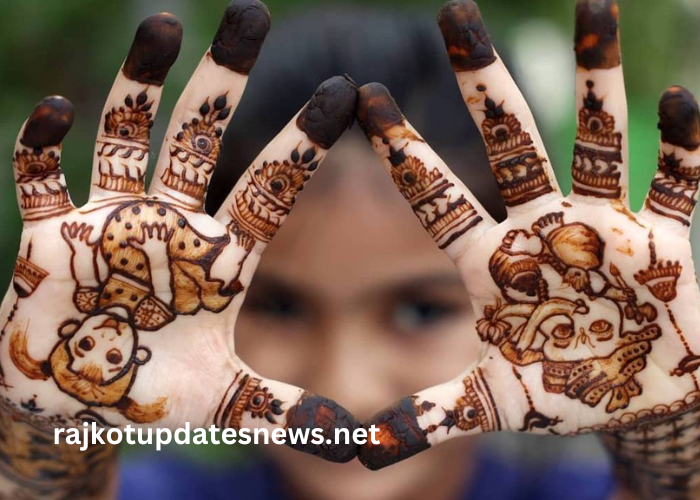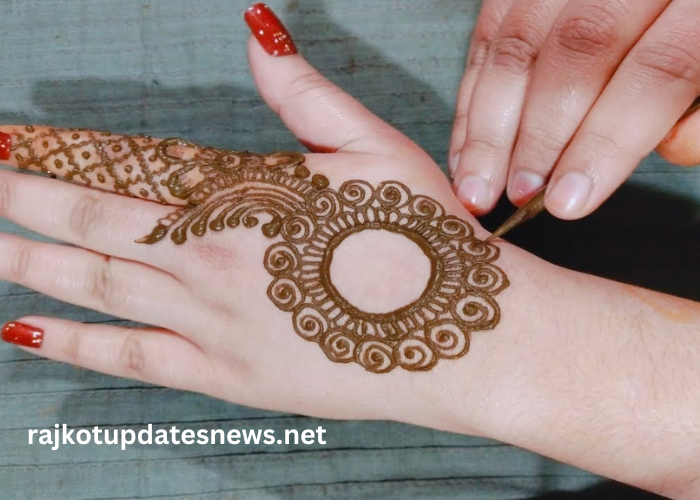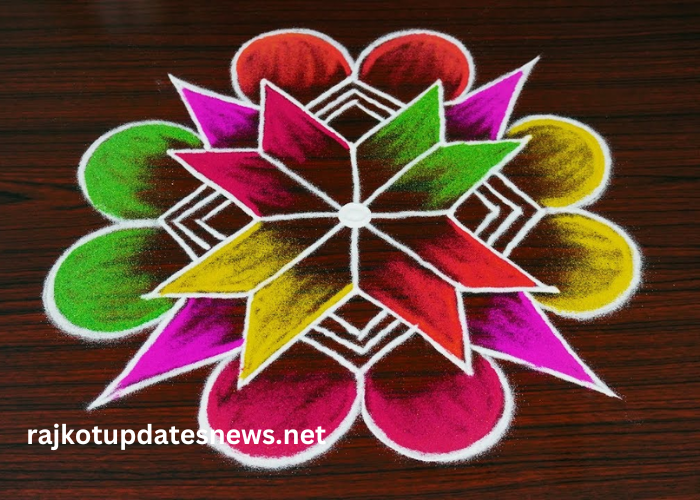Onam is the most anticipated festival in Kerala, celebrated with grandeur and joy. Among the many traditions that mark this festival, the creation of Onam Pookalam stands out for its beauty and cultural significance. Pookalam, also known as Athapookalam, is a floral design made from a variety of colorful flowers arranged in intricate patterns.
This tradition not only adds to the festive ambiance but also represents the welcome of King Mahabali, a revered figure in Kerala’s folklore. In this guide, we will explore the detailed aspects of Onam Pookalam, including its history, design types, materials used, and step-by-step creation process.
Key Points:
- Onam Pookalam is a traditional floral arrangement used to celebrate the Onam festival in Kerala.
- The design of Pookalam involves intricate patterns and vibrant colors symbolizing prosperity and joy.
- Understanding the historical and cultural significance of Onam Pookalam enriches the festival experience.
What is Onam Pookalam?
Onam Pookalam is a traditional floral arrangement made during the Onam festival. This vibrant design is placed at the entrance of homes, public spaces, and temples to celebrate the festival and honor King Mahabali.
The Pookalam typically evolves throughout the ten days of Onam, starting with a basic design and becoming more elaborate as the festival progresses. Each day adds new layers and colors, culminating in a stunning display by the final day of Onam.
Historical Significance
The tradition of Pookalam has deep historical roots in Kerala’s cultural heritage. Legend has it that King Mahabali, a beloved ruler of ancient Kerala, visits his people during the Onam festival. To honor him and express joy at his visit, people create beautiful floral designs.
The Pookalam is seen as a symbol of respect and celebration, welcoming the king and his spirit into homes. Historically, this tradition also signifies the abundance of harvest and the prosperity of the land.
Types of Pookalam Designs
Pookalam designs can range from simple patterns to intricate masterpieces. Here are some common types:
- Geometric Patterns: These designs include basic shapes such as circles, squares, and triangles. They are straightforward and often serve as a foundation for more complex designs.
- Floral Motifs: Inspired by local flora, these patterns incorporate specific flowers and plants, reflecting the natural beauty of Kerala. Popular motifs include lotus flowers and traditional symbols.
- Complex Patterns: These designs are elaborate, featuring multiple layers and intricate details. They often require advanced skills and creativity to execute successfully.
Materials Used for Pookalam
Creating a Pookalam involves a variety of materials. Understanding what goes into a Pookalam can help in planning and execution. Here’s a detailed look at the materials used:
| Material | Description |
| Flowers | A diverse selection of vibrant and fragrant flowers such as marigold, jasmine, hibiscus, and roses. |
| Leaves | Greenery such as banana leaves and ferns, which provide a contrasting background and add depth. |
| Petals | Colored petals used for detailing and highlighting specific parts of the design, enhancing its appeal. |
Steps to Create a Pookalam
Creating a Pookalam can be a rewarding process. Follow these steps to craft a beautiful floral design:
- Choose the Location: The Pookalam should be placed on a flat, clean surface, usually at the entrance of your home. Ensure the area is visible to guests and can accommodate the size of your design.
- Prepare the Base: Start by laying out a base using leaves or a large sheet. This serves as the foundation for your floral arrangement and helps in shaping the design.
- Design the Pattern: Sketch the desired pattern lightly on the base. This sketch will guide you in placing the flowers and petals accurately. Consider using a pencil or chalk for easy adjustments.
- Arrange the Flowers: Begin placing the flowers according to your sketch. Start with larger flowers to define the major elements of the design, then fill in with smaller petals and additional details.
- Final Touches: Once the main arrangement is complete, make any necessary adjustments. Add extra petals for finishing touches and ensure the design is symmetrical and aesthetically pleasing.
Popular Onam Pookalam Patterns
Here are some popular patterns often used in Onam Pookalam:
- Flower Vases: Designs featuring floral vases symbolize abundance and prosperity, often incorporating detailed patterns around the vase.
- Peacock Designs: Incorporating the peacock, a symbol of grace and beauty, these designs can be both intricate and striking.
- Traditional Symbols: Designs that include traditional symbols like the Onam boat or oil lamp reflect the cultural and spiritual aspects of the festival.
Table: Comparison of Pookalam Patterns
| Pattern Type | Complexity | Materials Used | Time Required |
| Simple | Low | Basic flowers and leaves | 1-2 hours |
| Moderate | Medium | Varied flowers, petals, and leaves | 2-4 hours |
| Complex | High | Multiple layers, diverse flowers | 4-6 hours |
Tips for a Perfect Pookalam
- Use Fresh Flowers: Opt for fresh, vibrant flowers to ensure your Pookalam looks lively and lasts longer. Fresh flowers also have a pleasant fragrance that adds to the festive atmosphere.
- Plan Ahead: Draft your design on paper before starting. This helps in visualizing the final product and ensures a smoother execution process.
Common Mistakes to Avoid
- Uneven Patterns: Make sure your design is symmetrical and evenly spaced. Uneven patterns can affect the overall appearance and harmony of the Pookalam.
- Limited Color Use: A diverse color palette enhances the visual appeal of your Pookalam. Avoid sticking to too few colors as it may make the design look dull.
Conclusion
Onam Pookalam is a vibrant and symbolic part of the Onam festival, reflecting the cultural richness and festive spirit of Kerala. By understanding its historical significance and following the detailed steps provided, you can create a stunning and meaningful Pookalam that adds to the joy of the festival. Embrace the tradition, experiment with different designs, and let your creativity shine through in your floral arrangements.
FAQ’s
- What is the significance of Onam Pookalam?
Onam Pookalam signifies respect for King Mahabali and celebrates the prosperity and joy of the Onam festival.
- How do I choose the right flowers for Pookalam?
Choose vibrant, fresh flowers that complement each other and fit the design pattern you plan to create.
- Can I use artificial flowers for Pookalam?
Yes, artificial flowers can be used, especially if you want a long-lasting arrangement, though traditional Pookalam uses natural flowers.
- How long does it take to create a Pookalam?
The time required depends on the complexity of the design, ranging from 1 to 6 hours.
- Where should I place the Pookalam in my home?
Place it at the entrance or a prominent location where it can be admired by guests and add to the festive atmosphere.



